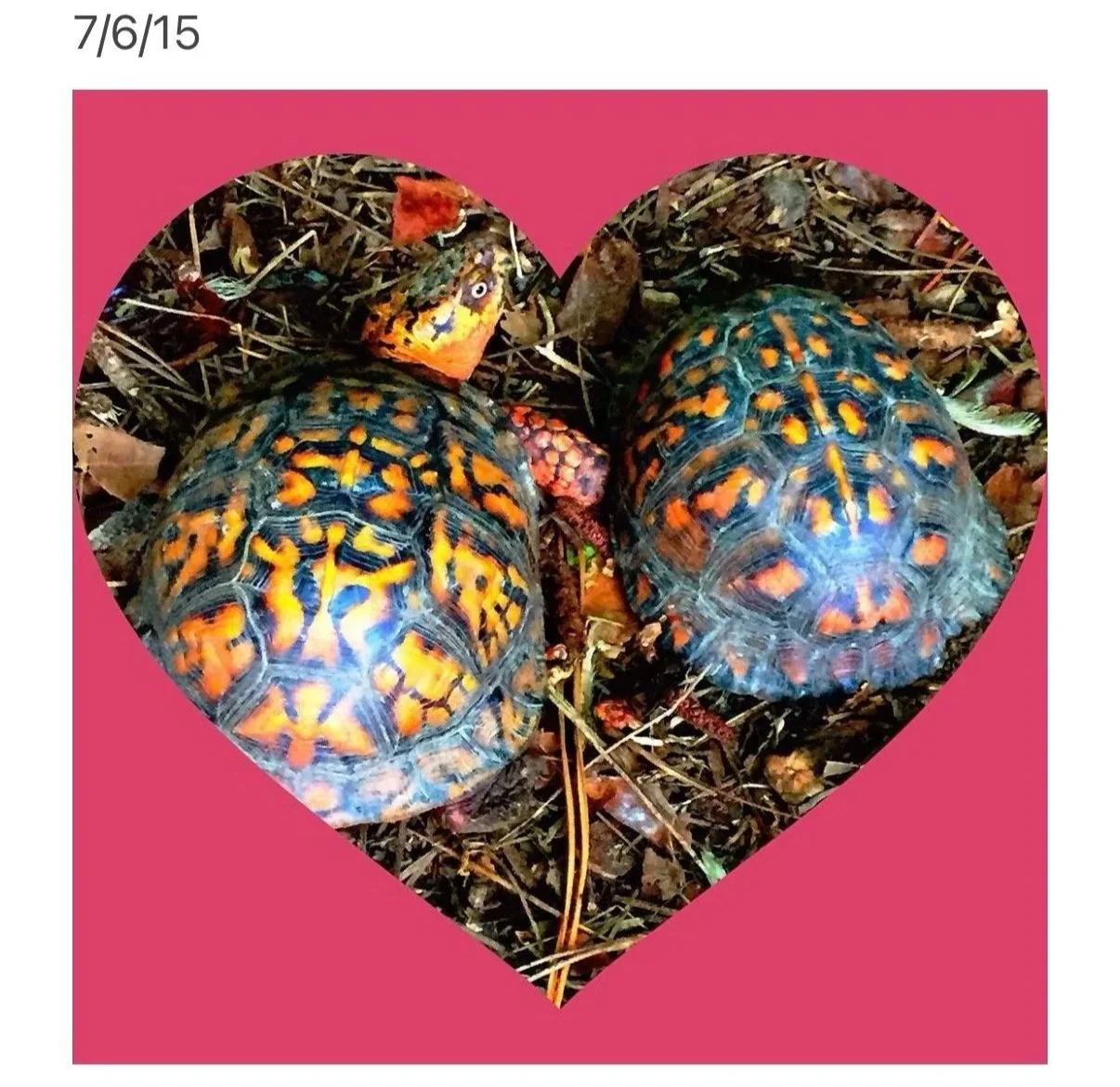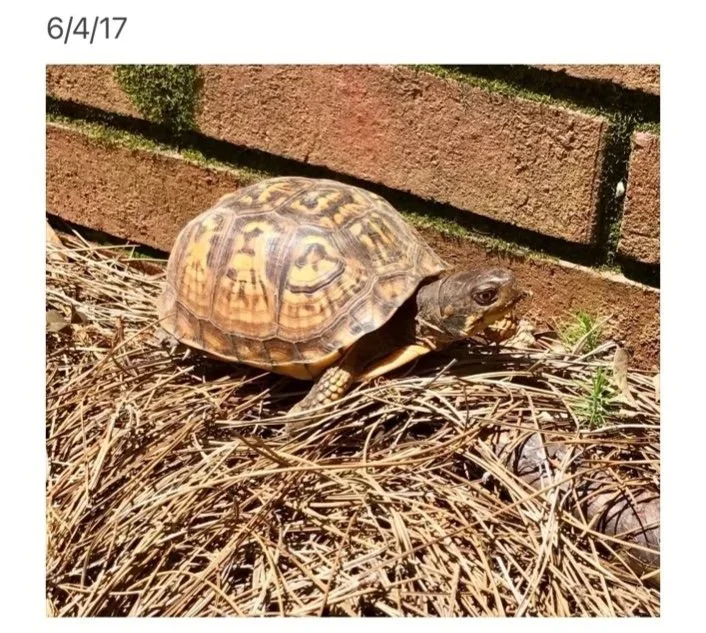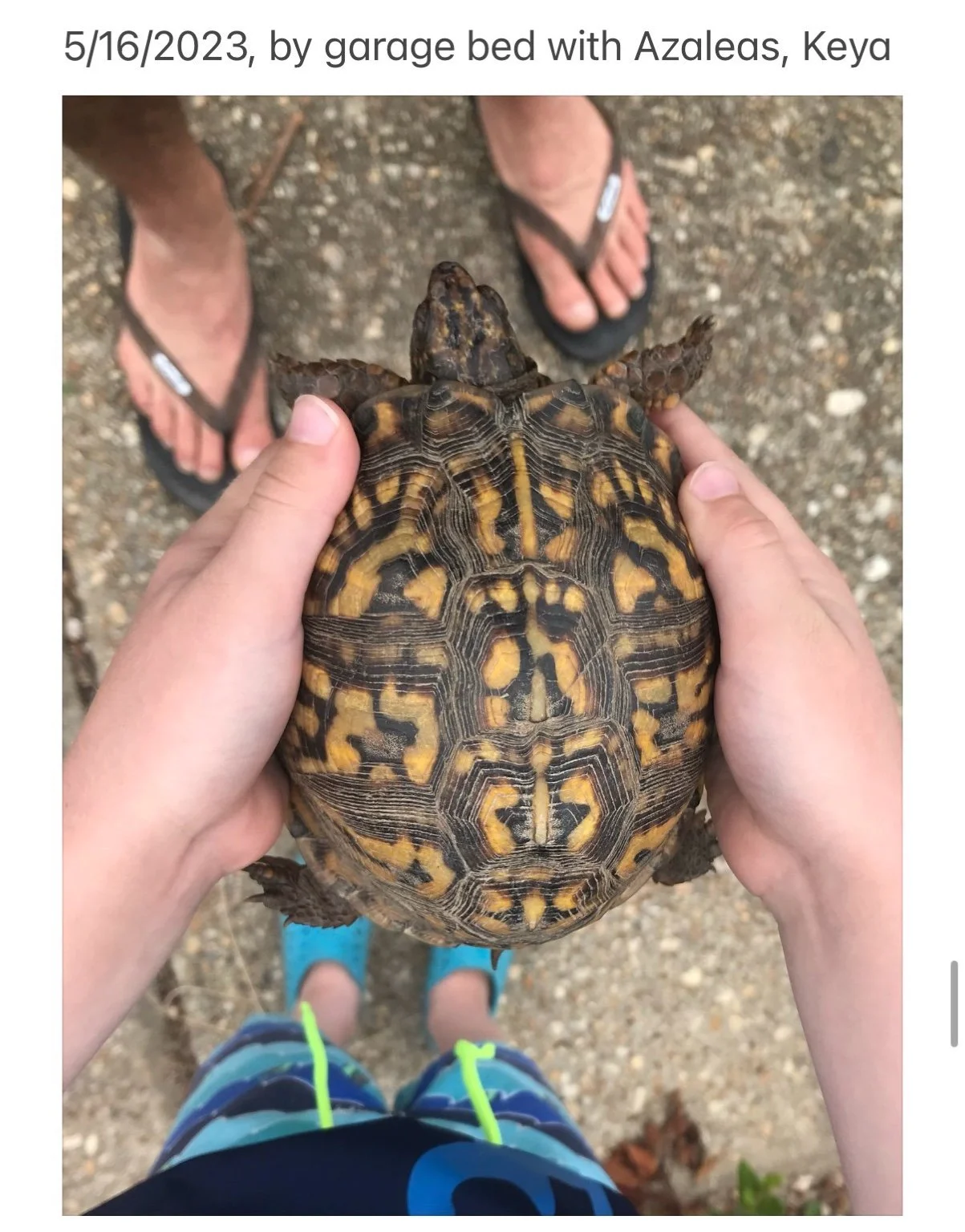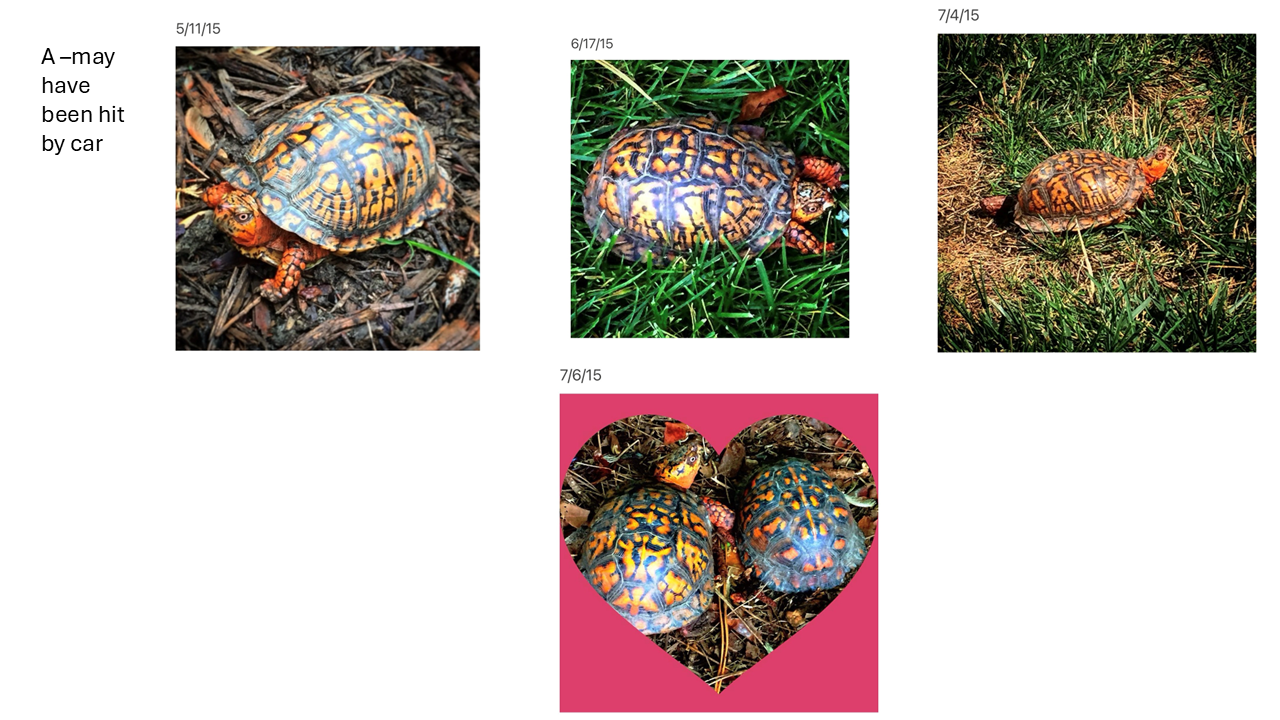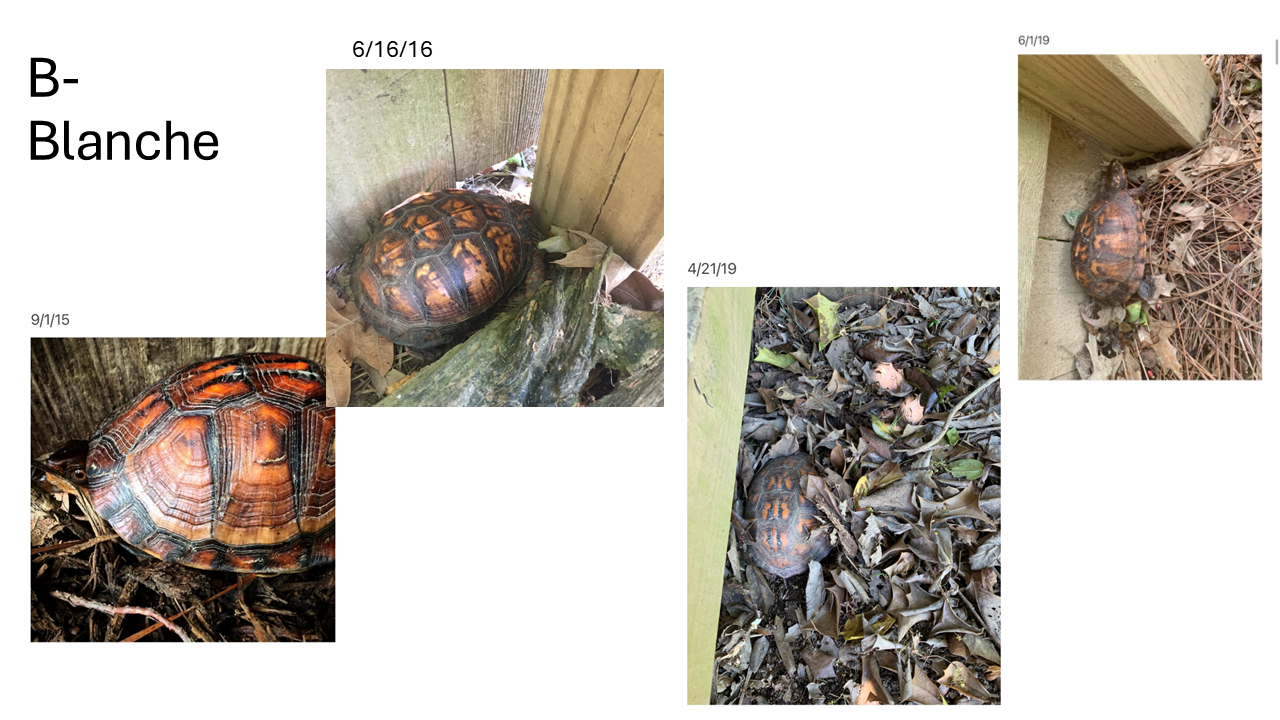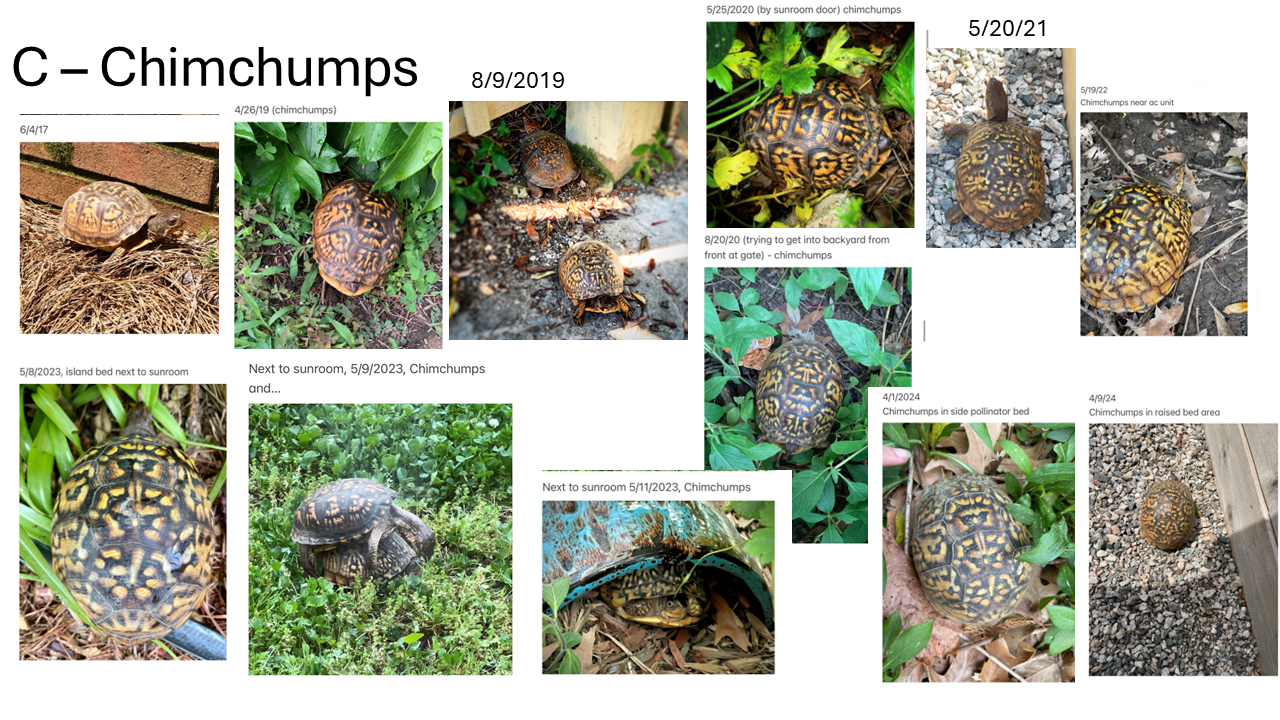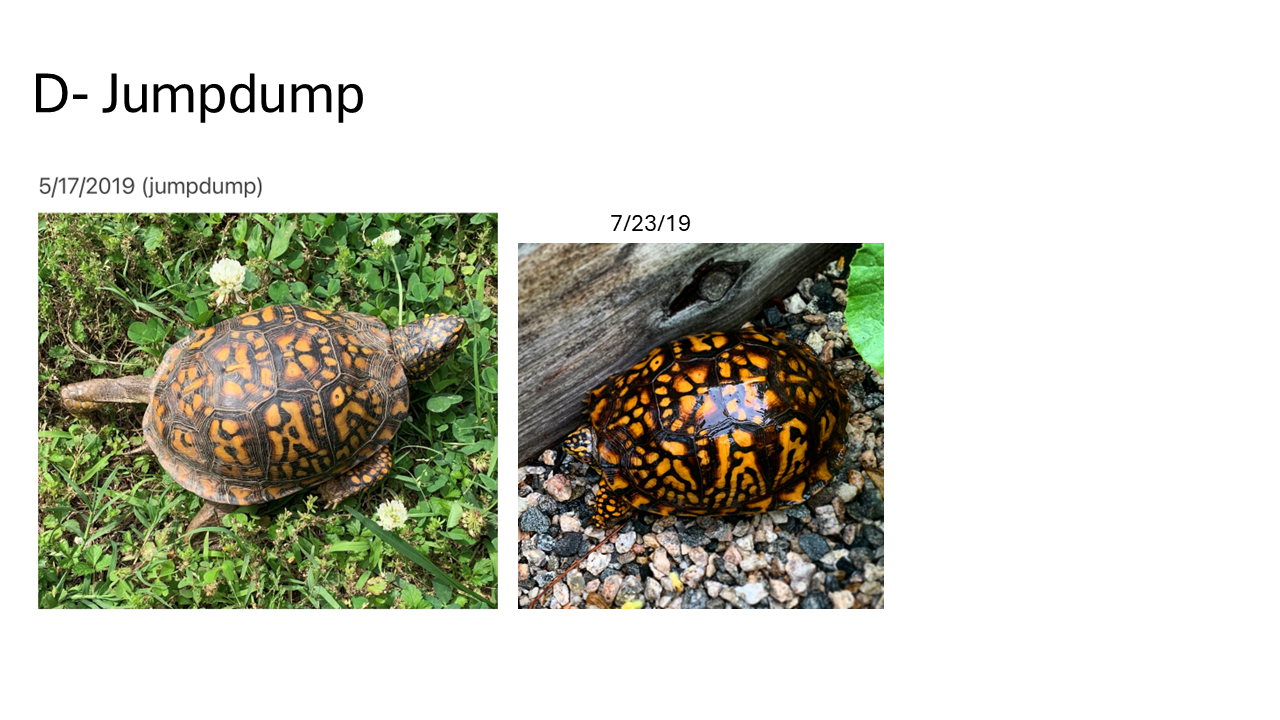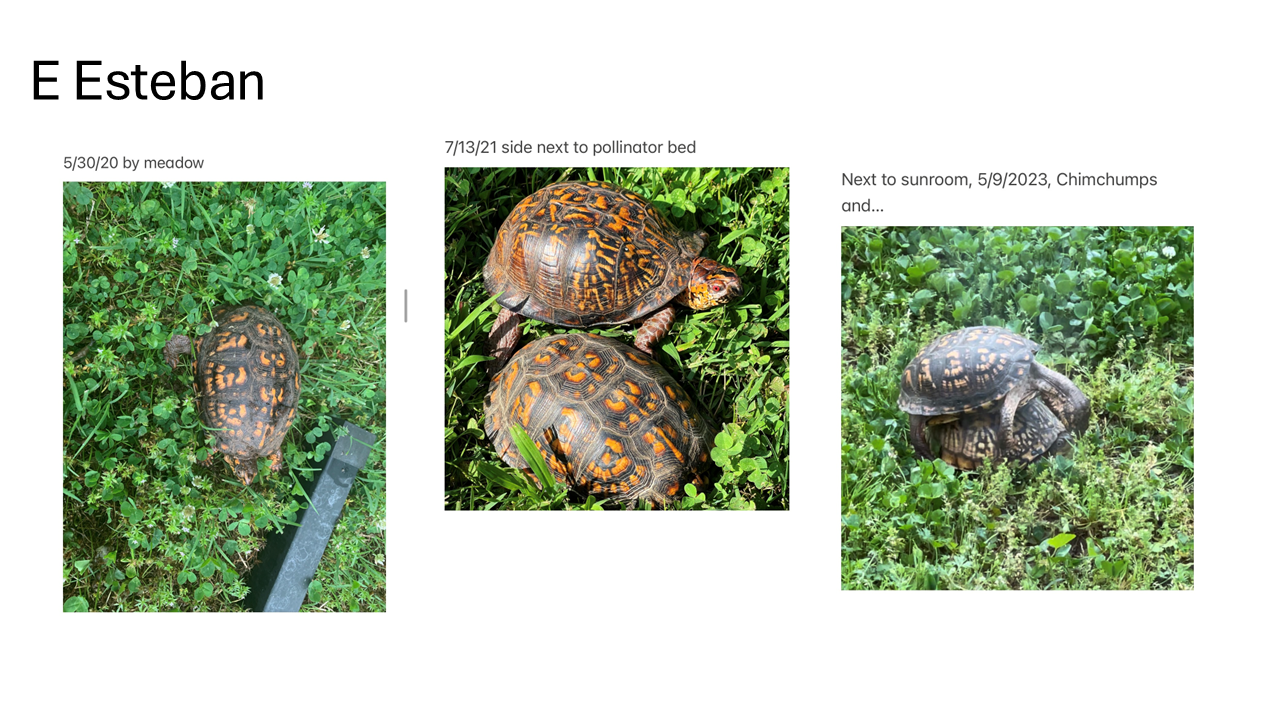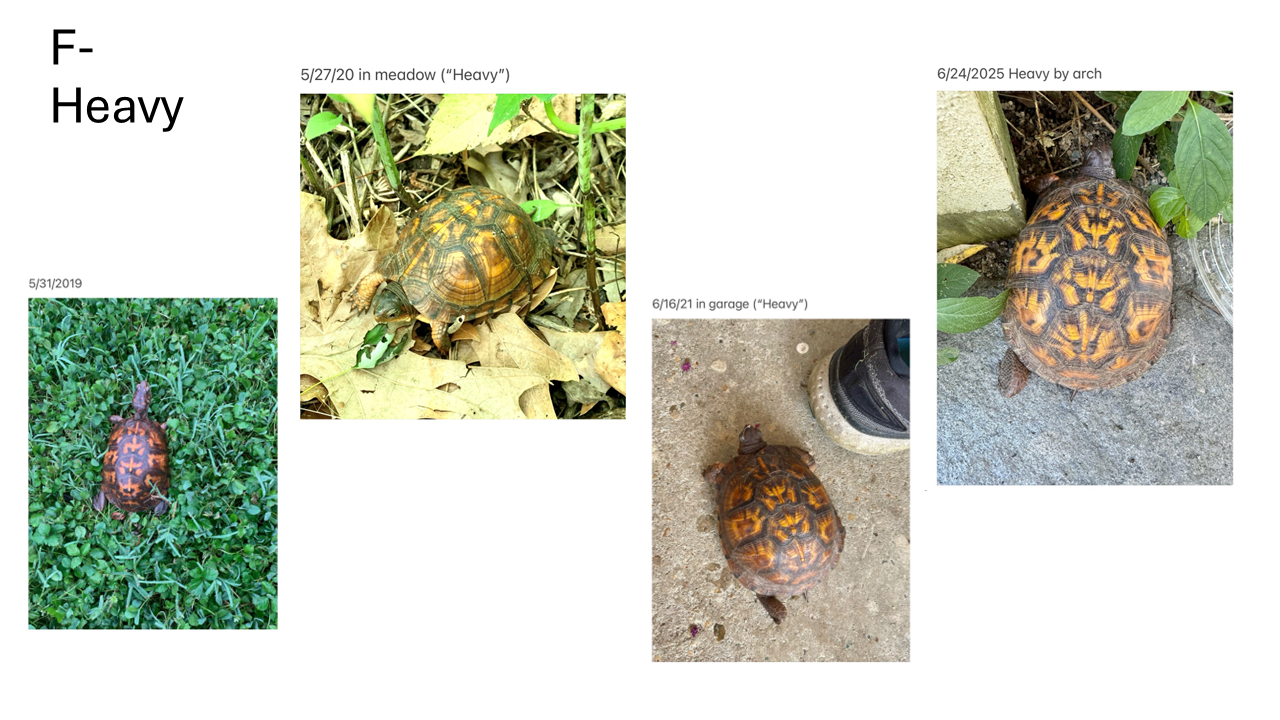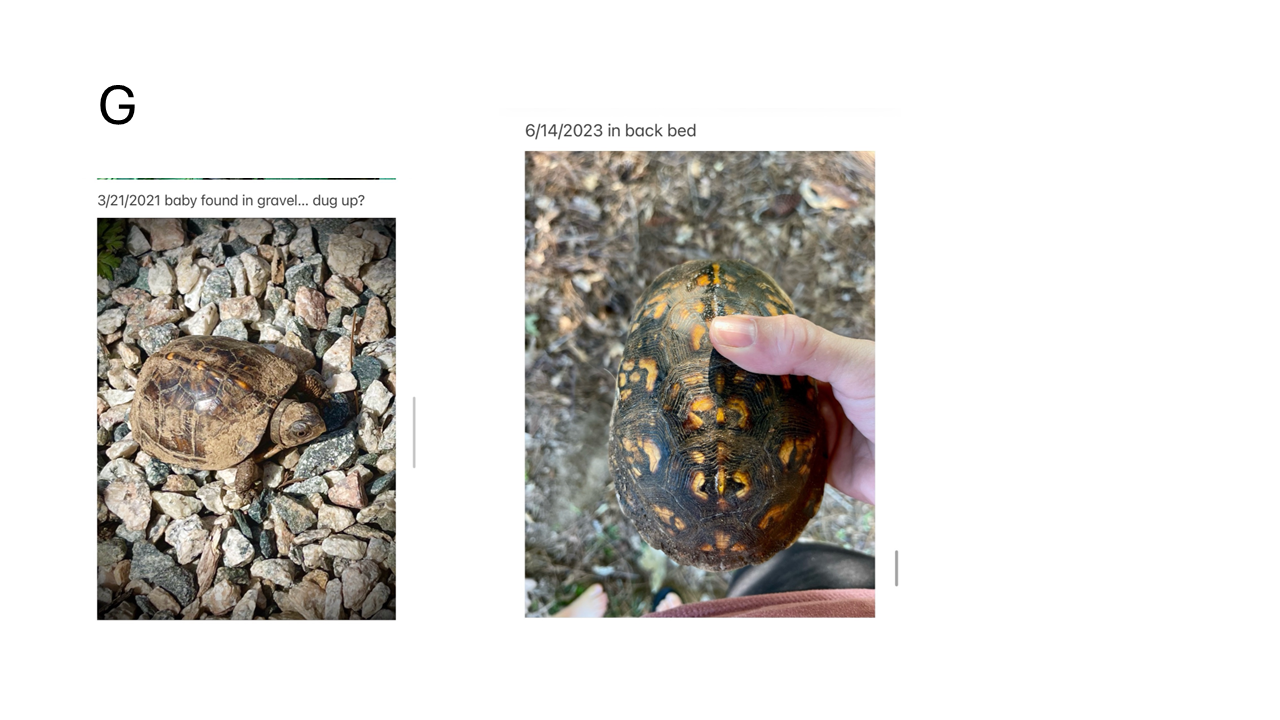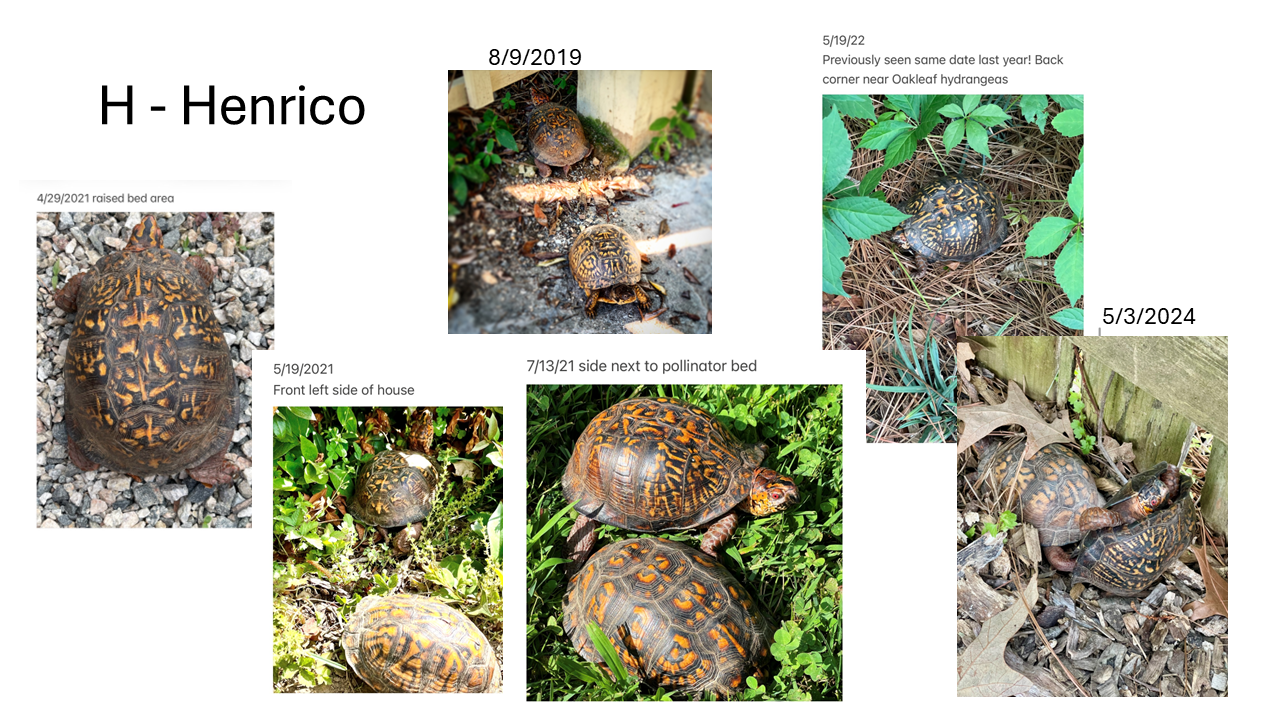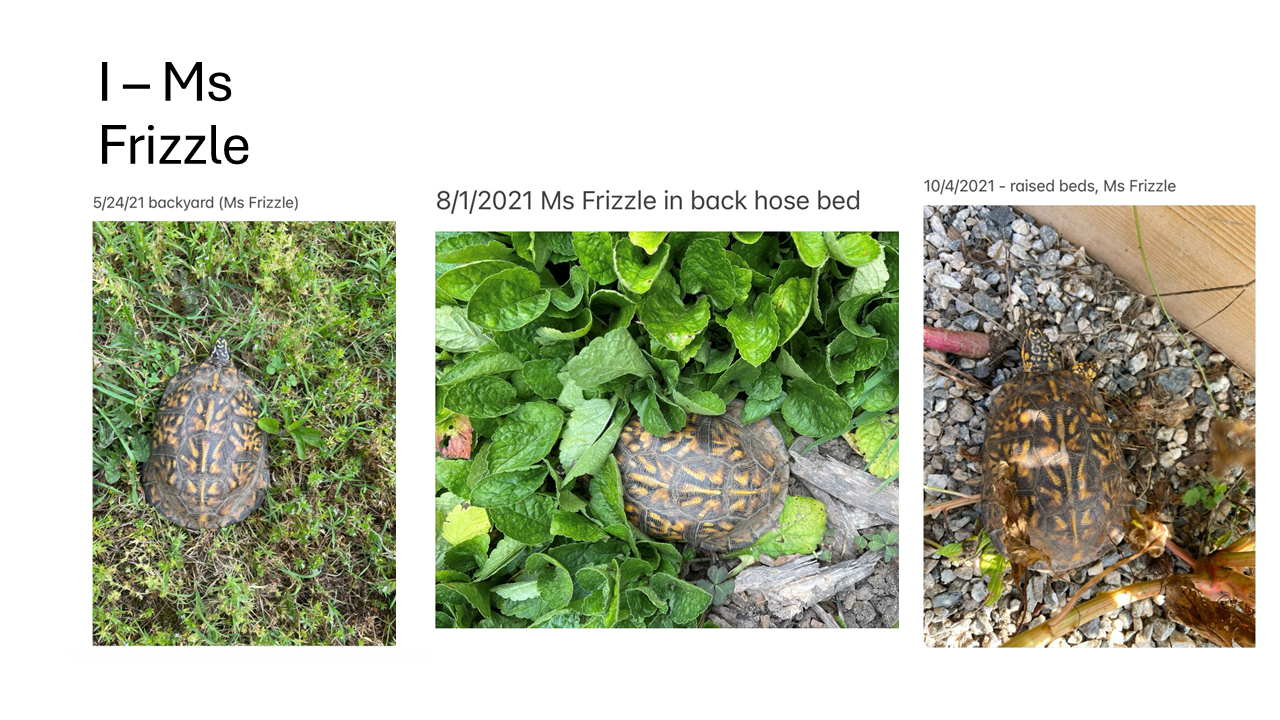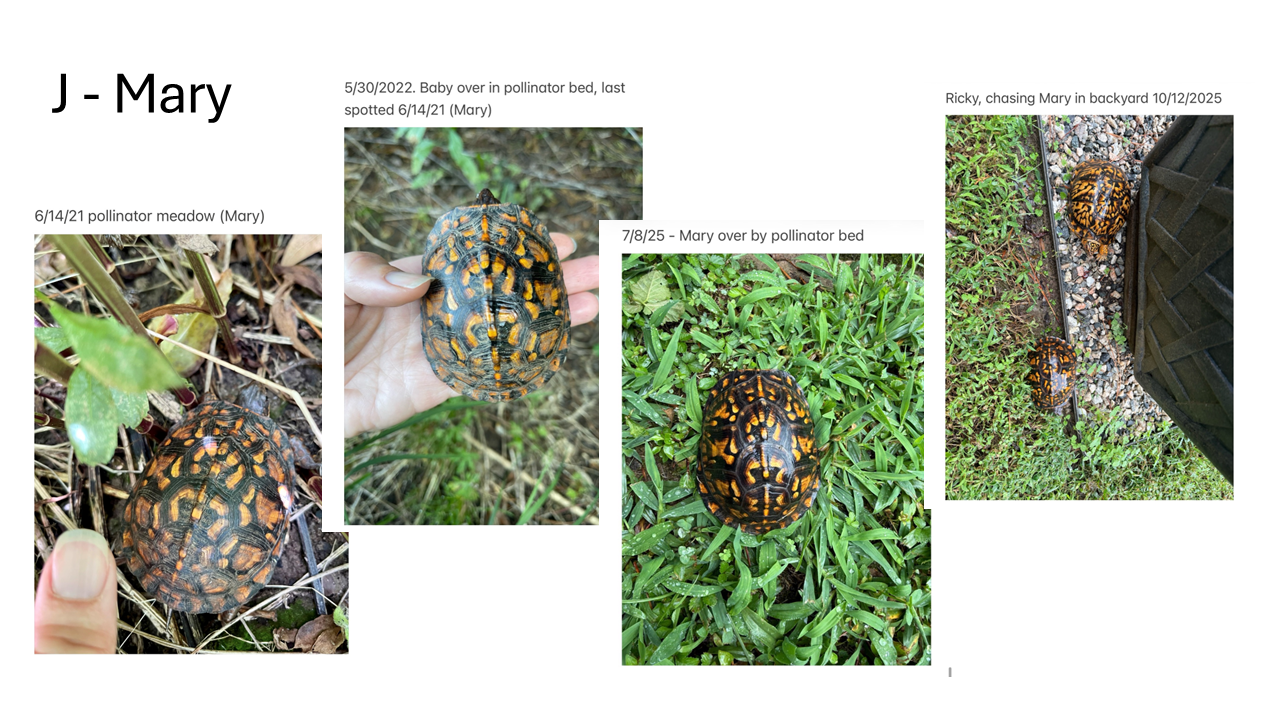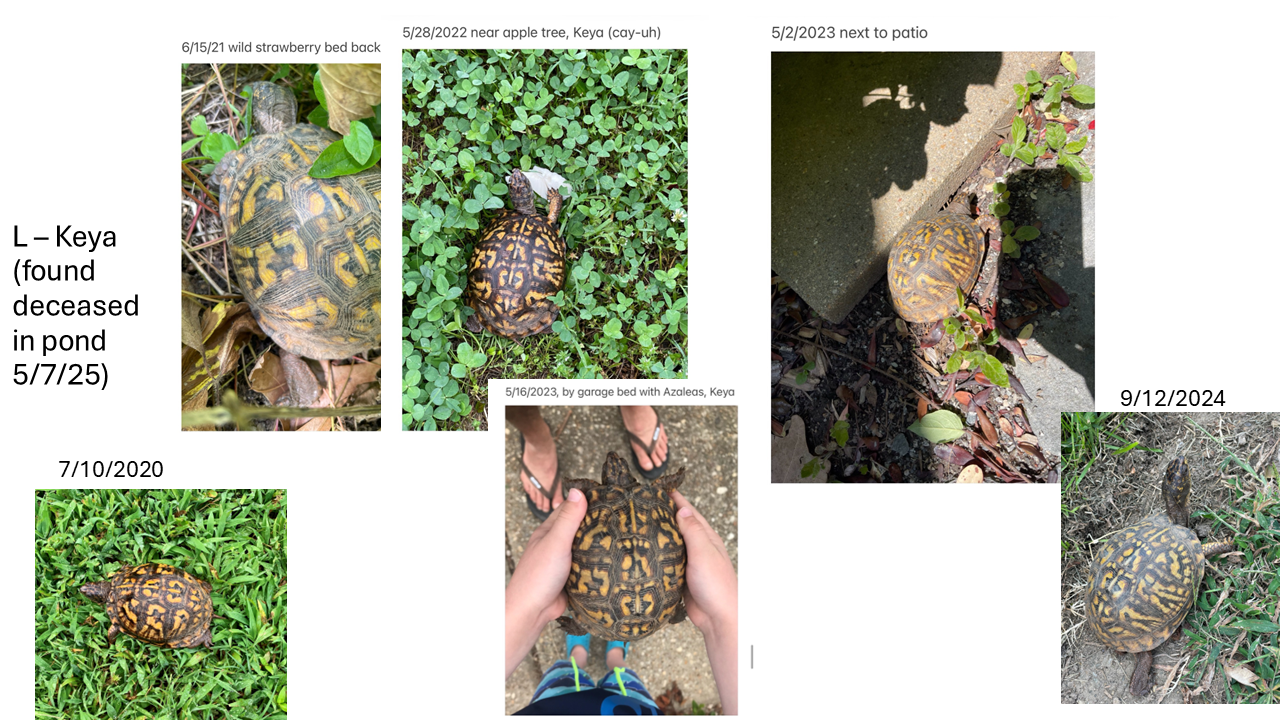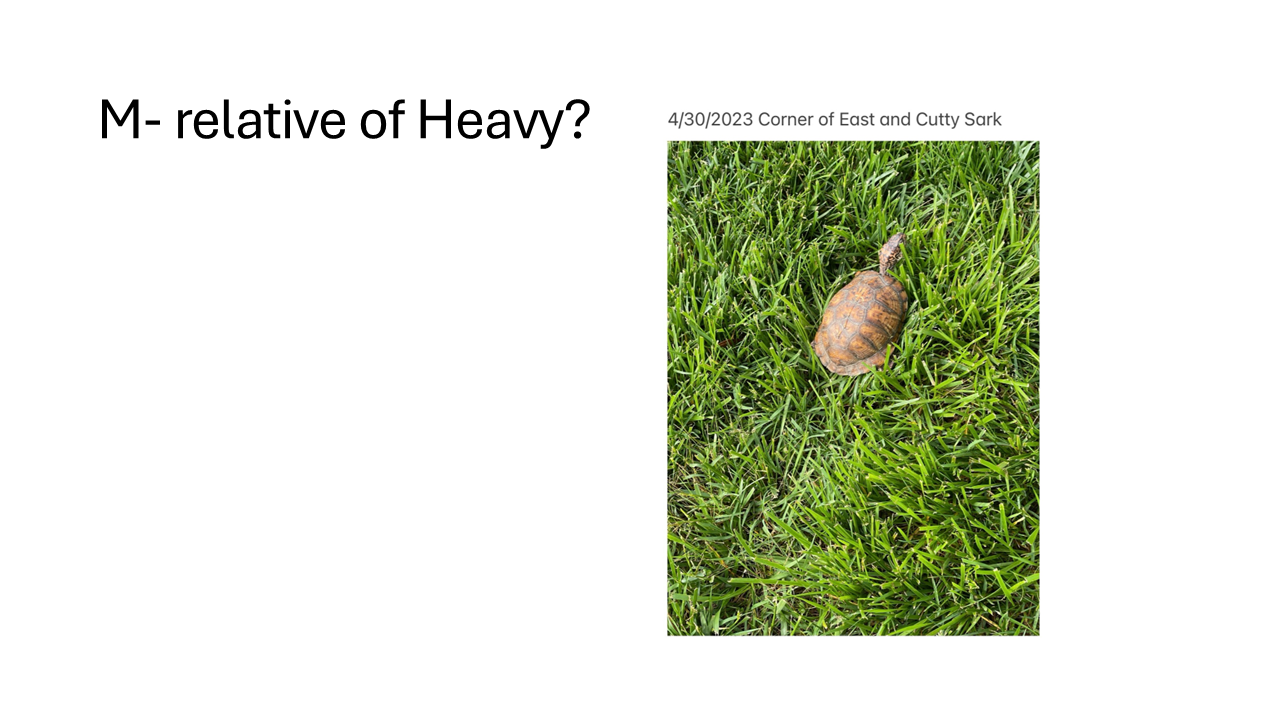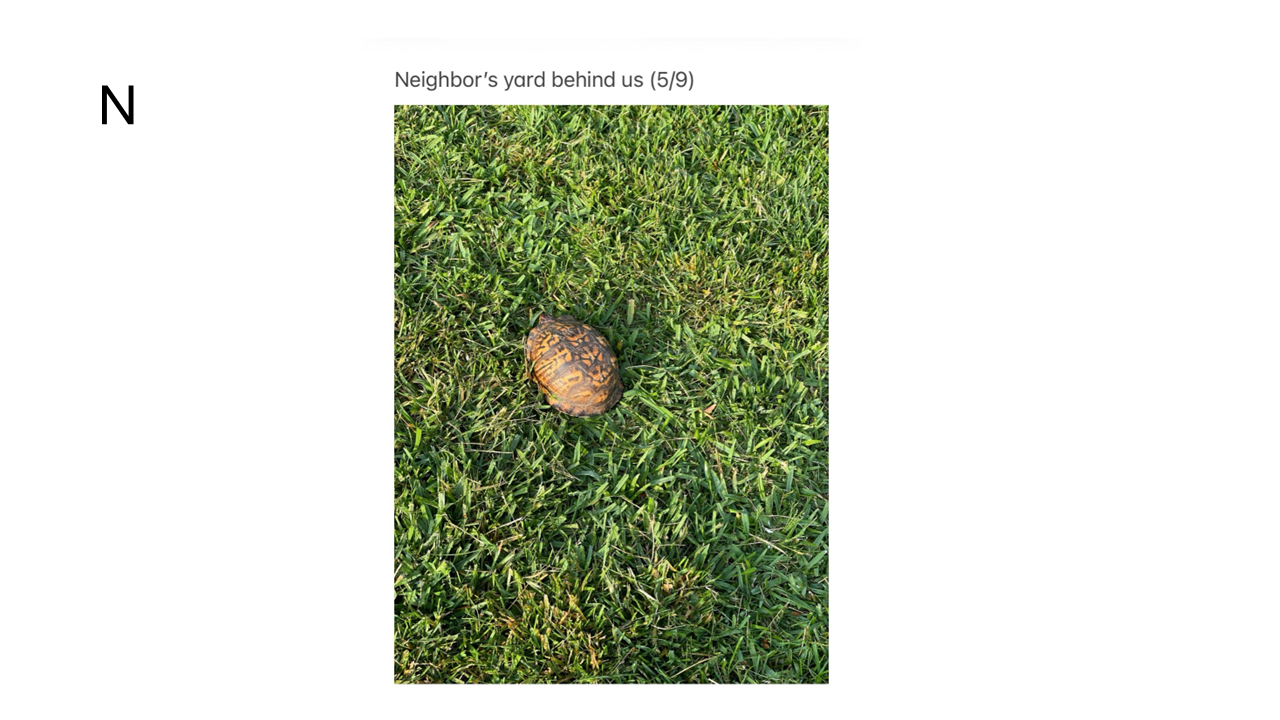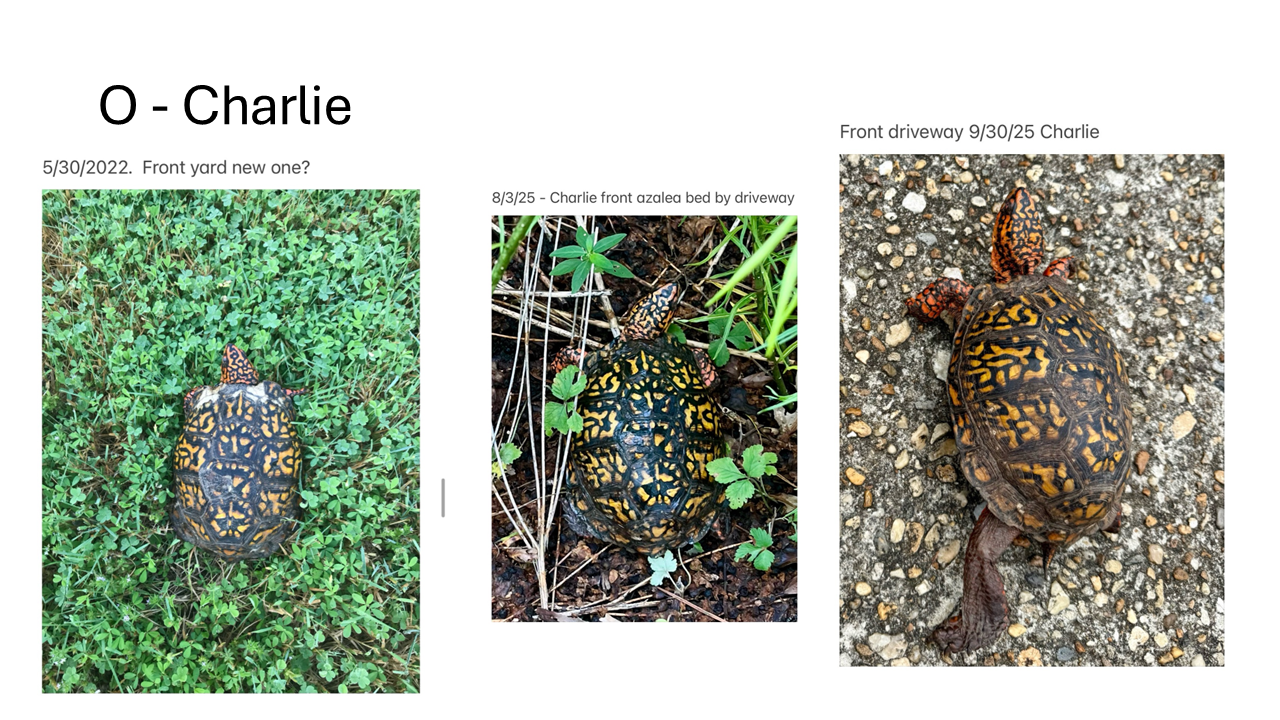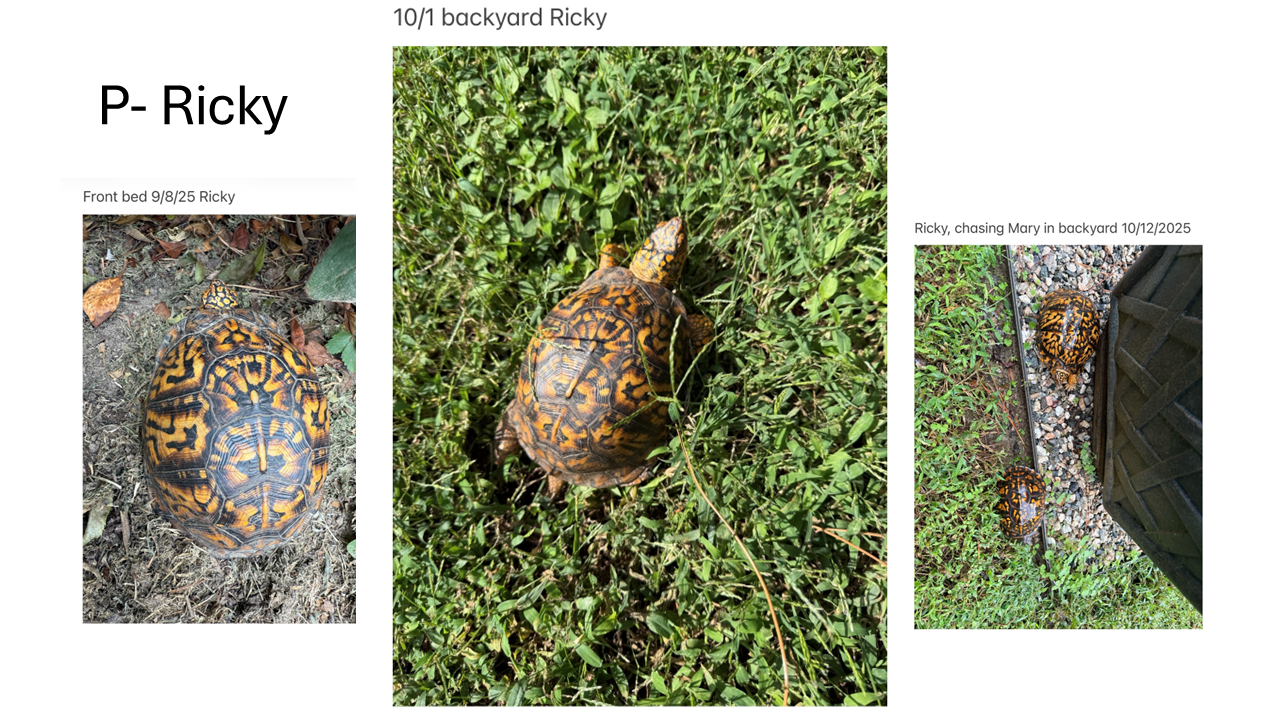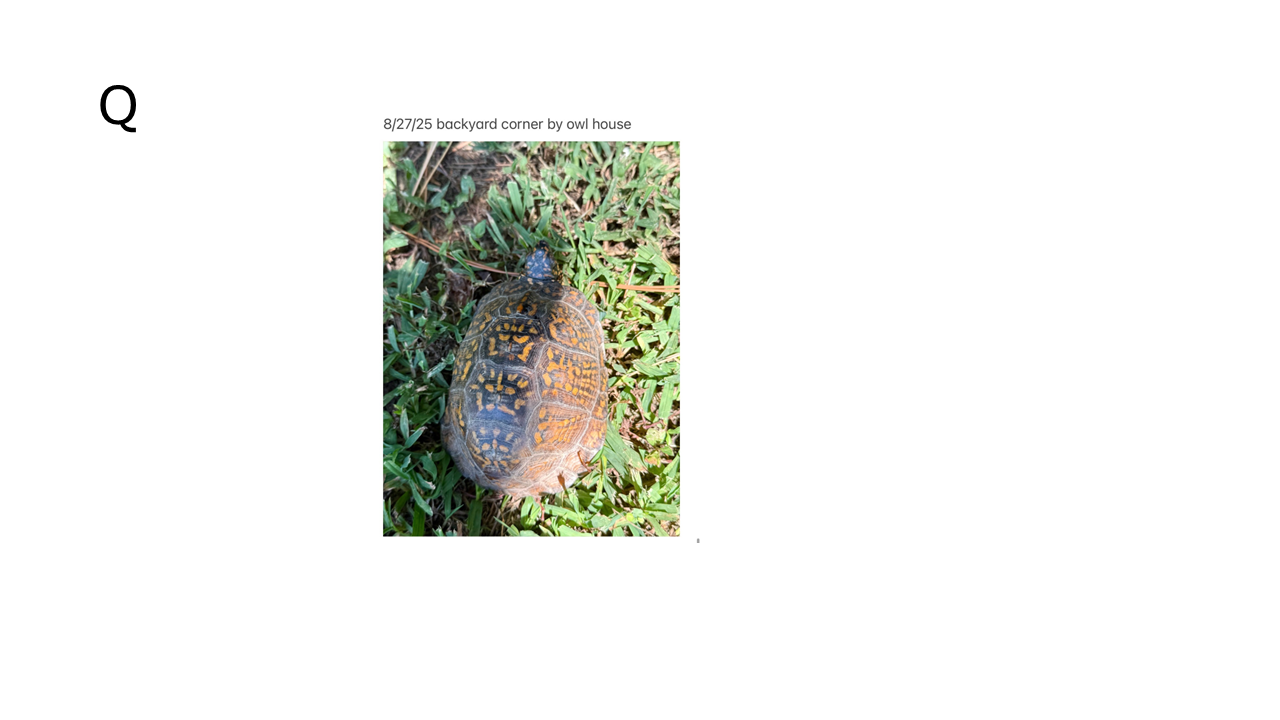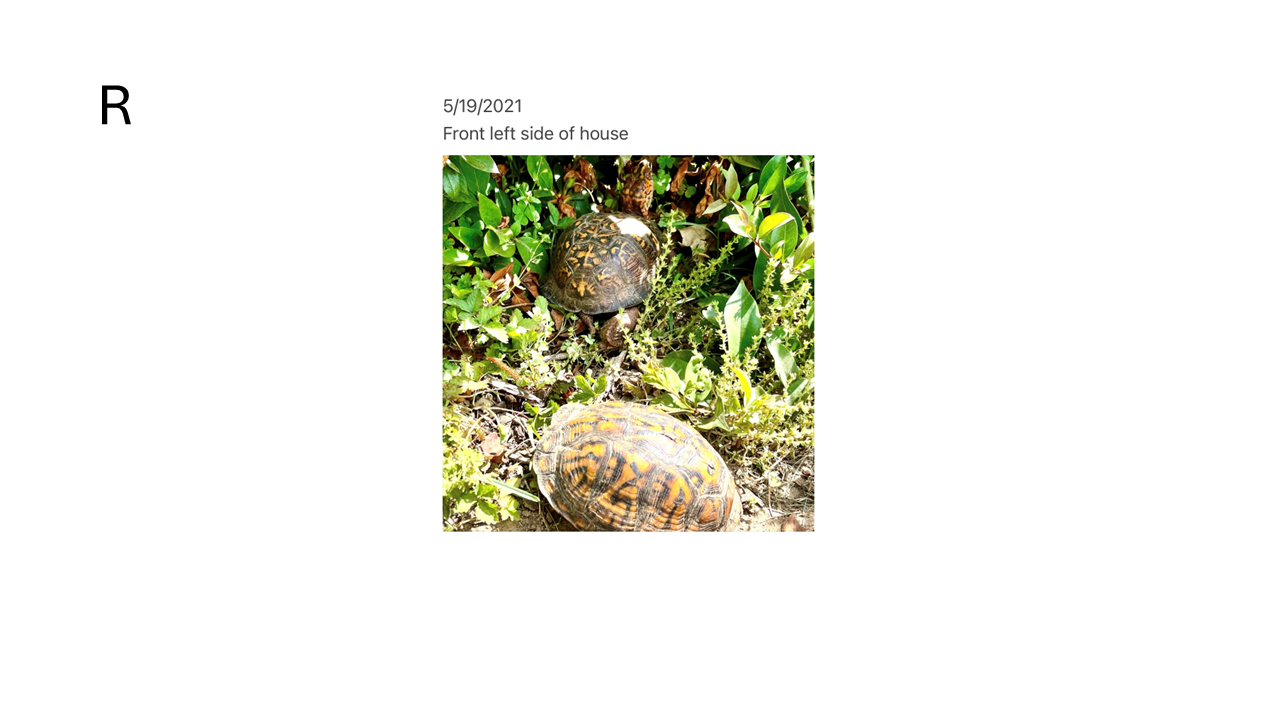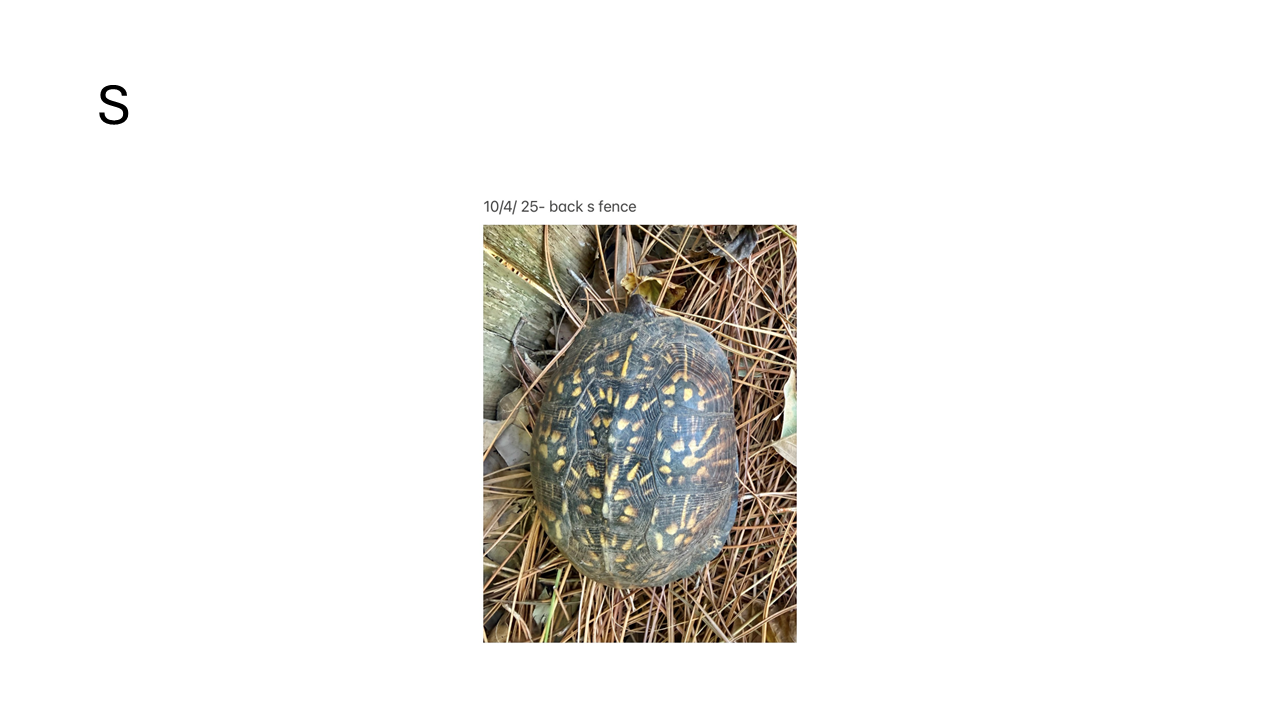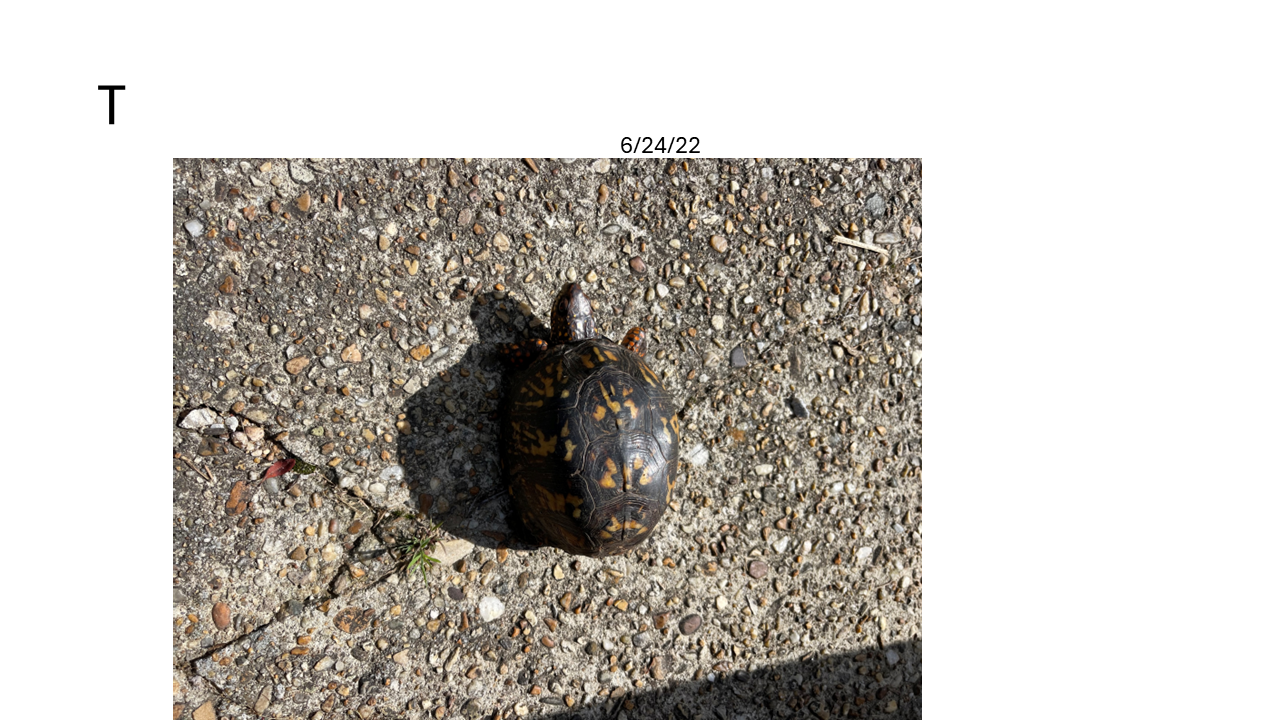🐢 Tracking Our Box Turtle Neighbors: A Backyard Conservation Story
When the Realtor Said “Perfect for a Pool”...
When my husband and I moved into our home at the end of 2014, the realtor enthusiastically told us that our open turf backyard would be perfect for a pool.
We had other plans.
Over the past eleven years, we’ve transformed that lawn into a living, breathing ecosystem — expanding the beds, removing turf, adding native plants, and most recently, introducing freshwater features for wildlife. One of the earliest and most rewarding surprises along the way was the arrival of our resident Eastern box turtles.
How It Started: From Curiosity to Conservation
Two turtles together!
In the spring of 2015, we started noticing turtles passing through the yard. At first, I snapped photos just for fun. That summer, when I saw two together, I became curious — were they the same turtles returning, or different individuals?
After a little research, I learned that each box turtle’s shell pattern is unique, much like a fingerprint. I also discovered that some people mark turtles with nail polish or paint to tell them apart — but that these materials can be toxic or harmful to their shells.
So, I decided to use photos instead. I began saving images in the Notes app on my phone, each labeled with the date and location. Over time, this casual curiosity turned into a detailed wildlife record.
Eleven Years, 64 Photos, and at Least 20 Unique Turtles Later...
To date, I’ve photographed 64 turtle sightings representing at least 20 different individuals who live in or travel through our property. Some, like our frequent visitor Chimchumps, have appeared at least a dozen times over the past eight years. Others may be travelers passing through our connected network of yards and forest edges.
First Chimchumps sighting!
Each turtle has a story — the shy juveniles emerging from leaf litter, the bold males wandering through the pollinator beds, and even the pairs we occasionally find together during mating season.
How We Keep Track — and Keep Them Safe
We never touch or handle the turtles unless it’s absolutely necessary for their safety — such as gently moving one off the driveway or rescuing a hatchling from the lawn when hawks or crows are nearby.
Otherwise, we observe and photograph them where they are, using close-up shell images and distinctive markings for identification.
Our property has a really old fence, with plenty of holes, which turtles use freely to travel. When we replace fence sections, we re-create small “turtle tunnels” so they (and other wildlife) can continue moving safely between yards. This small act helps maintain a corridor for them and other small wildlife.
What We’ve Learned from Our Turtles
Watching them over time has taught us so much about patience, habitat, and change.
Box turtles have strong home ranges. Many of ours seem to live right here year-round.
They prefer native cover. We’ve noticed they spend more time in areas planted with groundcovers like Fragaria virginiana (Wild Strawberry), Podophyllum peltatum (Mayapple), and leaf litter beds.
They’re fruit lovers! Fallen berries and cherry tomatoes from our vegetable beds are favorite snacks.
They respond to drought. During dry spells, we leave out shallow dishes of water near their usual paths — they find them quickly.
Chimchumps, after enjoying a strawberry in 2021
Family Science and Backyard Joy
Since my son was born in 2018, he’s joined the fun — often yelling “Turtle!” from the window when he spots one in the yard. We grab the camera and go identify who’s visiting that day. He’s even had the honor of naming several of them: Mary, Ricky, Charlie, Keya, and more.
What started as an accidental encounter has become a family project in citizen science and empathy — one that connects us, season after season, to the wildlife that shares our space.
Using AI to Help with Identification
Recently, I decided to see whether AI image comparison tools could help match shell patterns across years. To my surprise, it worked remarkably well — confirming some turtles I’d already matched and finding a few new connections I’d missed.
It’s incredible to see how technology can support backyard naturalists like us, providing data that can eventually contribute to larger wildlife studies — without disturbing the animals themselves.
Lessons in Life and Loss
Over the years, we’ve had moments of heartbreak too — one turtle struck on the road and another found lifeless in the pond. Those moments are difficult reminders that human spaces can be dangerous for slow, secretive creatures like these.
But far more often, the experience has been joyful — a reminder of how small changes in our gardens can make a big difference. Every patch of native plants, every shaded corner, every safe passage adds up to real habitat.
Our Backyard Turtle Album 🐢
Below are some of our longtime residents and visitors, each with their own markings and personality.
Keya, being rescued from the driveway by my son in 2023
Want to Start Your Own Turtle Tracker?
You can do this at home too — no special equipment or tagging needed!
Here’s how:
Take clear photos of the top of each turtle’s shell (carapace).
Record date, location, and any unique markings.
Never disturb, relocate, or paint them.
Create a digital or notebook log.
Plant native groundcovers and fruiting species to provide food and shelter.
If you’d like to start your own, download our free “Backyard Turtle Tracker” template below.
📍 Share Your Sightings with Virginia Researchers
If you live in Virginia and spot an Eastern Box Turtle, you can contribute to state wildlife tracking by submitting your observation to the Virginia Herpetological Society (VHS).
Your data helps scientists understand turtle populations, migration patterns, and threats across the region.
🔗 Report a Sighting:
https://www.virginiaherpetologicalsociety.com/report-sighting.html
You can include photos, location info, and any notes — just like you would in your own tracker.
It’s a simple way to turn backyard observations into real-world conservation data!
BACKYARD TURTLE TRACKER
Observe – Photograph – Protect
Name/ID (give your turtle a nickname): _______________________
Date Seen: _____________________ Time: ___________________
Location / Habitat (where you found it): ______________________
___________________________________________________________
Weather Conditions: □ Sunny □ Cloudy □ Rainy □ Windy □ Hot □ Cool
Description of Shell Pattern / Colors:
___________________________________________________________
___________________________________________________________
Behavior Observed:
□ Walking □ Eating □ Resting □ Digging
□ Mating □ Basking □ Nesting □ Other: ____________
Estimated Sex: □ Male □ Female □ Unknown
Size (approx.): □ Hatchling □ Juvenile □ Adult
Photo Taken? □ Yes □ No File name or phone note #: ___________
Nearby Plants / Food Sources:
___________________________________________________________
Notes / Other Wildlife Seen:
___________________________________________________________
Did you move the turtle? □ Yes □ No (Only if necessary for safety)
If yes, why/where: _________________________________________
─────────────────────────────────────────────
Tip: Never paint or mark turtles! Their shells are living tissue.
Use photos to identify individuals and keep them wild.
─────────────────────────────────────────────

